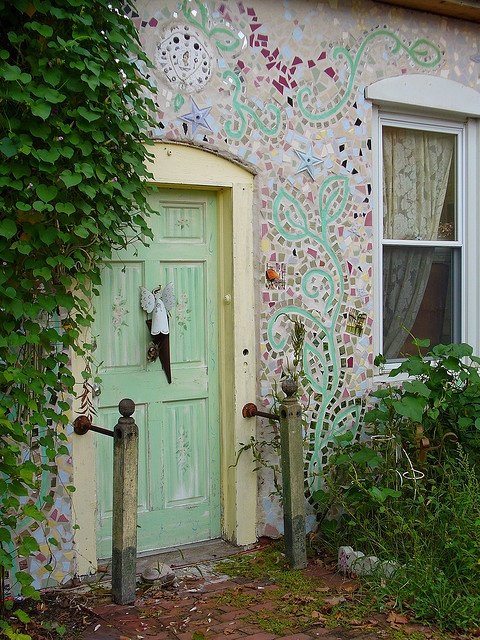#5775. Mosaic Facade of a Rural Cottage with Elements of Folk Decorative Art
Before us is an enchanting example of vernacular architecture with unique decorative facade treatment. The central element of the composition is a mint-green wooden door, which creates a vibrant contrast with the rest of the structure. The door is framed by a simple arched opening and flanked by two weathered wooden posts, lending a certain ceremonial quality to the entrance.
Of particular note is the mosaic treatment of the facade, which presents a complex pattern of turquoise spirals and burgundy fragments, apparently executed in the broken tile technique (picassiette). This ornamental motif creates a sense of continuous movement across the wall of the house, reminiscent of Art Nouveau influences and indigenous folk art.
The left side of the facade is almost completely covered with green ivy, which organically integrates into the overall composition, emphasizing the building's connection with nature. To the right of the door is a window with light curtains, creating a sense of habitation and domestic comfort. The lower part of the facade shows signs of natural aging, with characteristic traces of moisture and moss at the base, adding authenticity and historical depth to the structure.
Overall, this is a beautiful example of vernacular architecture, where functionality harmoniously combines with expressive decorativeness, and handcrafted mosaic creates a unique character, transforming an ordinary dwelling into a piece of folk art.
